#prototon
Explore tagged Tumblr posts
Text
HOTLAND: PART 7: MTT Resort, a Surface intermission, and what the CORE has in store.
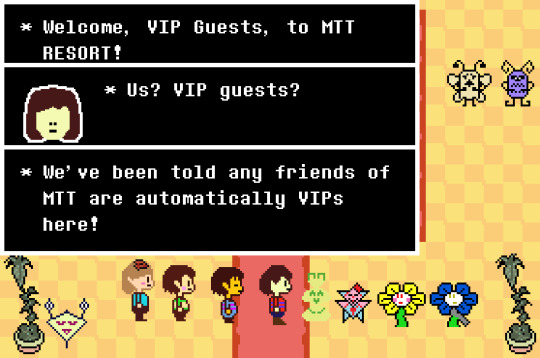
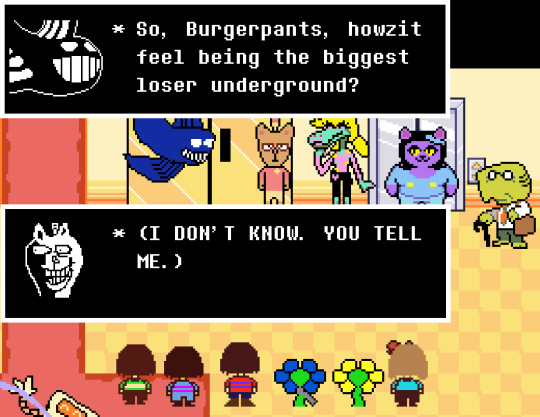
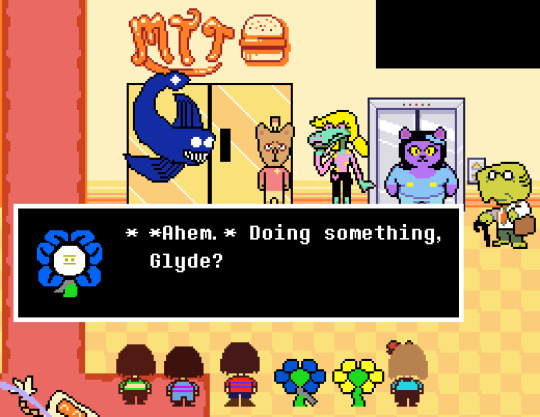
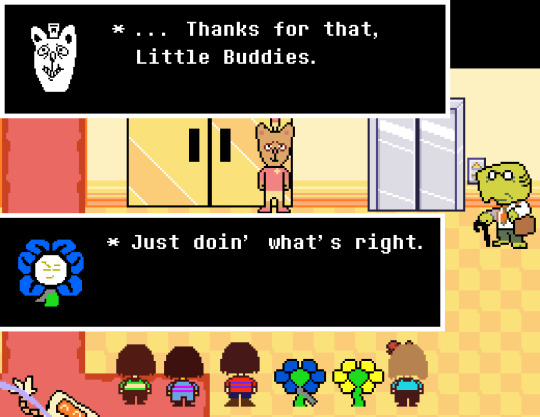
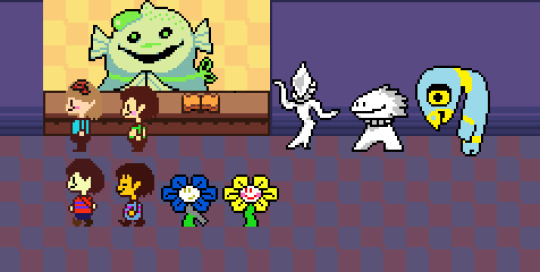
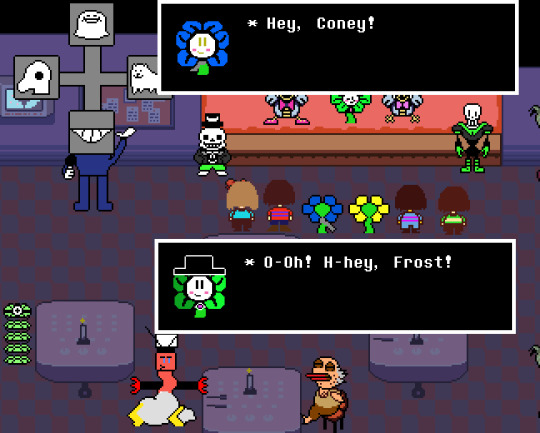
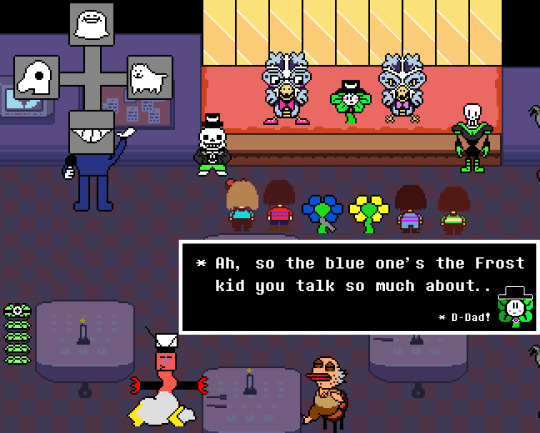
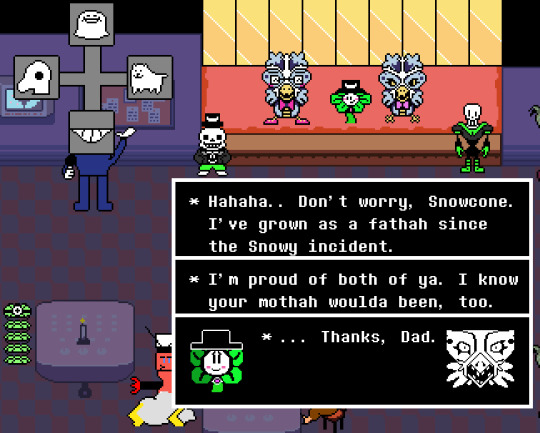
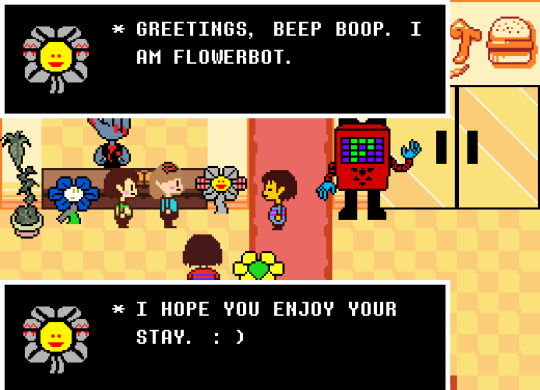
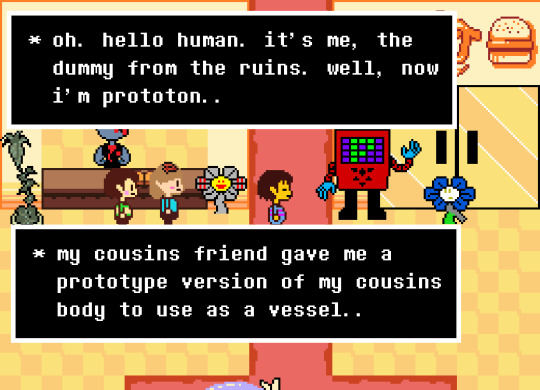
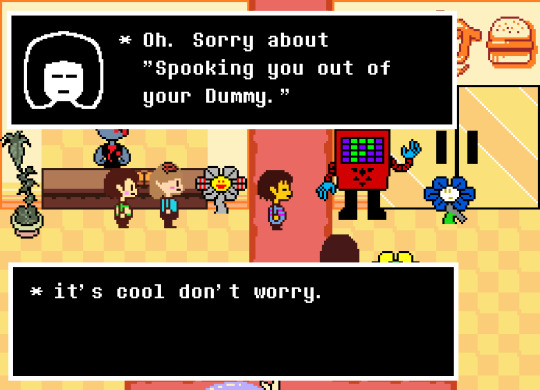
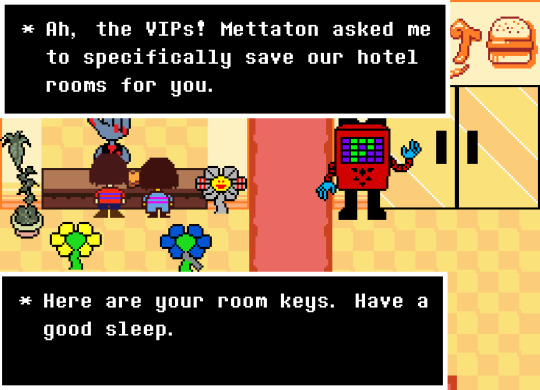
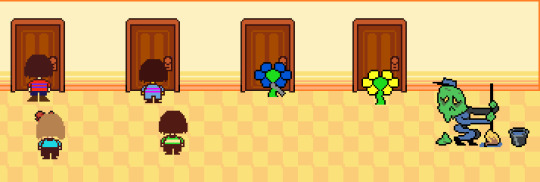
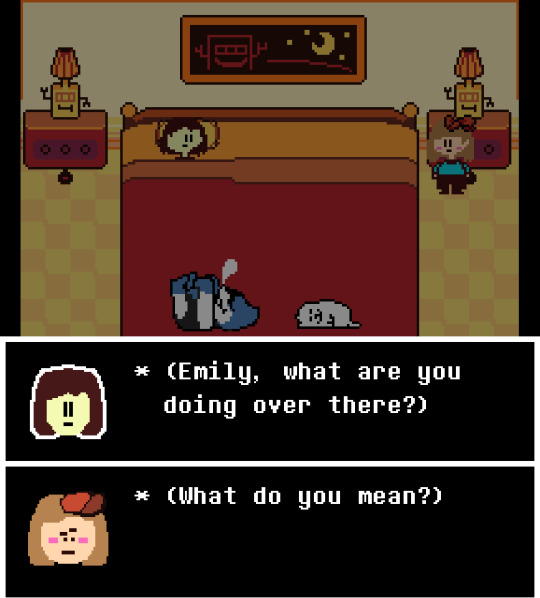
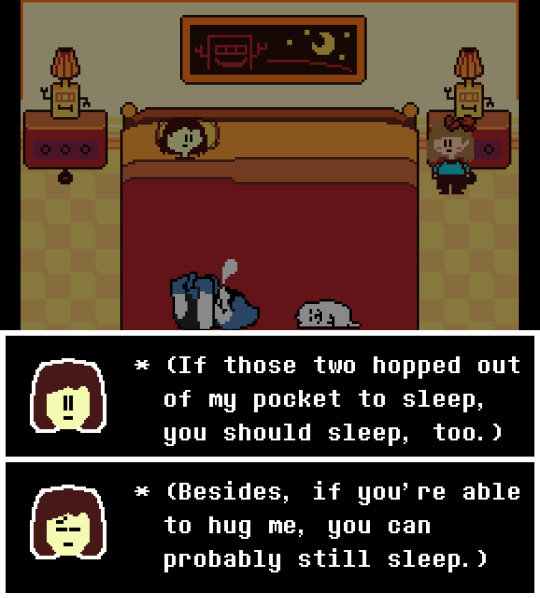
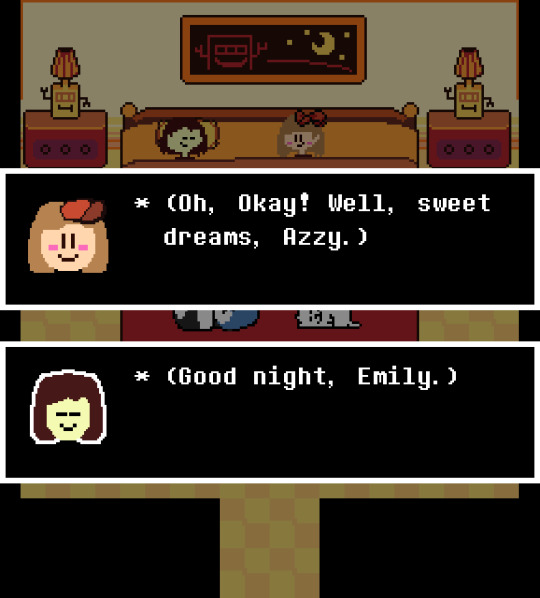
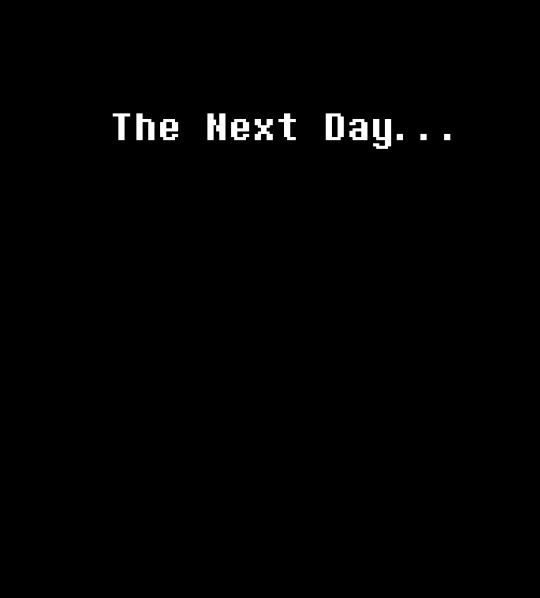
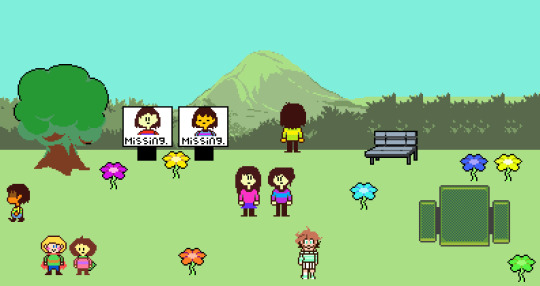
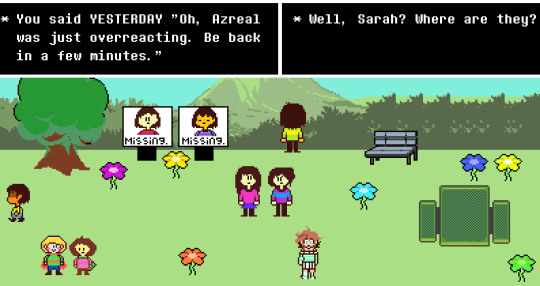
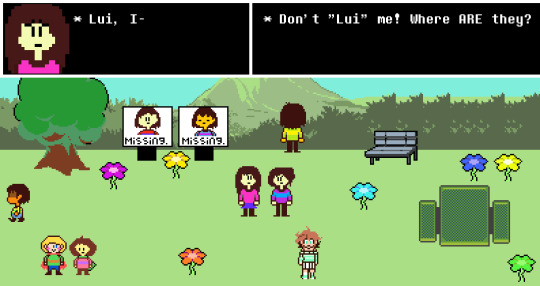
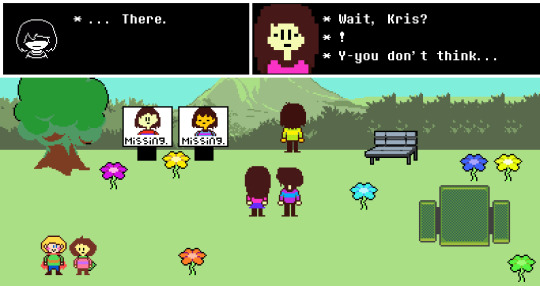
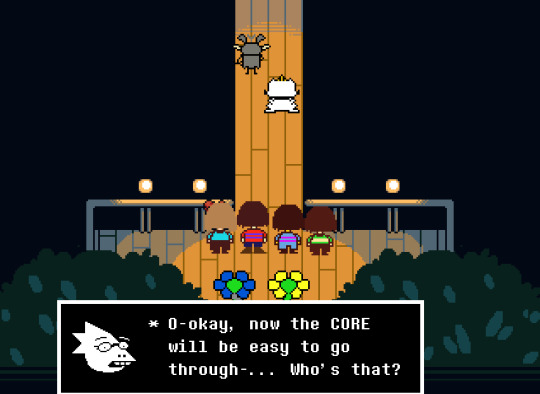
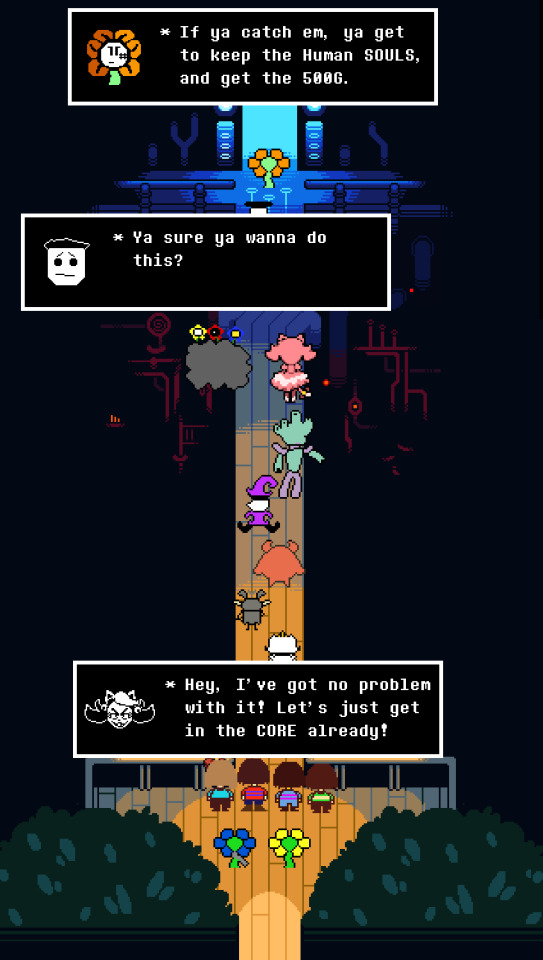
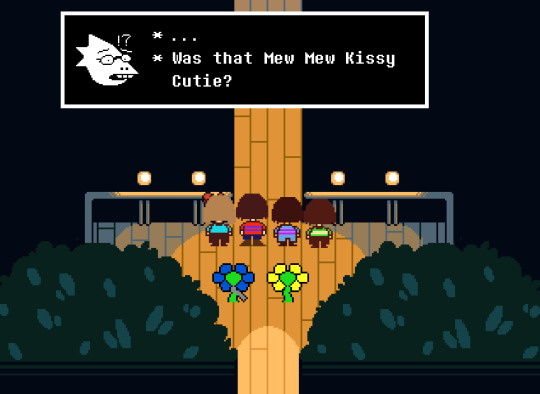
Previous
Next
Cameos:
Jotbree, Heartha, Spinny, and Pitchforkast from @univer-underswap
The Migosp and Whimsun from the first panel are from @univer-underfell
The blonde kid on the surface with the Red Cape is the Adventure Essence from @ut-anomalous
The kid next to them is Charlie from Undertale: Woshed up.
And finally, the only cameo from an AU that isn't mine in this part: Chloe from @pacifideundertaleau! why is she here, you ask? simple! she's the chlo. :3
#undertale#undertale au#hellspawntale#take 2#azreal#emily#hellspawn#chara#frost#frisk#coney#alphys#scorch#kyle#mad mew mew#draincloud#sans#papyrus#prototon#flowerbot
16 notes
·
View notes
Text
I lied this concept haunts my brain thank you op
a undertale yellow scenario/au idea:
Mettaton, in Undertale canon time, post UTYellow pacifist, goes into the abandoned Steamworks to see if there’s still anything fun in there to “repurpose” (steal) for Alphys’ projects.
however, he stumbles upon AXIS going on a date with their metal spouse. Mettaton leaves immediately since he doesn’t want to be rude or be seen, but he wants to know more, such as:
who is this other robot
who made them
why were they made
why are they living in the steamworks
do they have a soul? if they do, he’s not unique by being a robot with a soul anymore
were they made before, or after him? if they were made before him, he’s DEFINITELY not unique anymore
and he just goes on a wild chase trying to figure out the how and why of things and slowly discovering secrets that get crazier and crazier and more awful every time. by the end of it, Mettaton ends up having a conspiracy board covered with string and pictures and Alphys actually gets kind of concerned for him.
#Undertale#undertale fandom#undertale fanart#undertale art#undertale mettaton#mettaton undertale#mettaton#mettaton ex#mtt ex#undertale mtt#mtt#mtt fanart#UT! MTT#undertale alphys#alphys#alphys undertale#UT! Alphys#Undertale AU#undertale aus#undertale yellow#UTY#uty axis#ut yellow#undertale yellow axis#UTY! Axis#UTY! Integrity#UTY! axis prototypes#UT AU! Prototon#UTY! Chujin
131 notes
·
View notes
Note
Hey! I was wondering, do you speak any old Irish, and if so, how did you learn it? Im interested in learning!!
I can read and, to a certain extent, write in Old Irish. (Most people don't speak it, but we are taught how to pronounce it...which was actually an impediment to me learning Modern Irish, because I'd had the older stuff first.)
There are a couple of options! The easiest, if you have the time + money, is always to take courses, which is how I did it. As part of my MA, I was required to take classes in both Old Irish and Welsh, and I've continued taking courses in my PhD. Now, if, for some reason, you don't have the ability to casually drop a few thousand Euros on a MA degree, there are a couple of sources I can point you to. If you do this, I can also try to walk you through it to the best of my ability, and I can assign you homework.
First off: Quin's Old Irish Workbook and Strachan's Paradigms. With most copies of Strachan's paradigms, like the one you see on Archive.org, it's kind of neat because people add notes to it over time, so it's also deeply personalized to the Celticist, like a family bible.
I'll tell you immediately: the current editions of both of these are quite frail. They fall apart quite easily, since they're softcover. (I eventually had mine custom-bound together.)
Stifter - Sengoidelic: Old Irish For Beginners. It's VERY in-depth, slightly intimidating, but there are lovely cartoons of sheep to make it slightly less scary.
Ranke de Vries - A Student's Companion to Old Irish Grammar
Antony Green - Old Irish verbs and vocabulary
Rudolf Thurneysen (trans. D.A. Binchy): A Grammar of Old Irish. I'm going to tell you now: This book is DENSE. It is technical. It is OLD. It is EXPENSIVE (especially if you want a good copy, since the one I got was so thick that it was actively falling out of its hardcover binding; I ended up buying an older copy.) BUT...it will help your Old Irish. It's still considered to be the definitive book on Old Irish, even though it's eighty years old at this point. So: I recommend it, but I'd recommend it after some of the others. De Vries is probably the most beginner friendly.
Now, after all that, you will need places to practice your Old Irish.
I highly recommend anything from DIAS' Medieval and Modern Irish series -- they tend to have very good dictionaries, so it isn't like you're being tossed into the deep end. Most of these are technically later than the Old Irish period, but they ought to give you a taste for the basics. (The problem with Old Irish is that Middle Irish was basically creeping in even from the time of some of our earliest texts.) One of these, which you can get online, is Compert Con Culainn and Other Stories, ed. Van Hamel.
Also: Thurneysen's Scéla Mucce Meic Dathó.
Ernst Windisch: Irische Texte mit Wörterbuch
If you can get ahold of it, Vernam Hull's edition of Longes mac nUislenn is also excellent.
When you're reading these texts, I recommend you to make a note of the case, number, and gender (nouns) or the classification, tense, number, whether it's adjunct or conjunct, and whether it's deuterotonic or prototonic, etc. (verbs). Mutations, including invisible mutations (nouns and prepositions). Every bit of information you can parse out, so you can instantly recognize words as you come across them and what they are doing in a sentence.
Finally:
I'm sure you've heard this before, but Old Irish is notoriously difficult as a language. Having Modern Irish helps (particularly re: vocabulary, where you'll see a lot of familiar words), but the language has also radically changed. The verb in particular has totally changed the way that it's formed, going from a predominately synthetic language to a predominately analytical language (Munster Irish is closest to Old Irish in terms of verb formation, though each dialect preserves little bits of it.) Old Irish is significantly richer as far as vocabulary, and it had many more declensions (stems), each of which has its own way of doing things. You had more tenses. You had a neuter gender (though that was already going by the wayside). The definite article was totally dependent on the case, number, and gender of the noun (preserved these days in 'an' and 'na', but it used to be much more comprehensive). You had a full dative and accusative case (no ablative, thank God.) You had infixed particles, and those were divided into three classes depending on the classification of the verb. And adding to all that is that the language was already changing, so the Old Irish that you will be learning in the textbooks is not 100% what will be reflected in the editions. I've been doing this for six years and I still need to use a dictionary + paradigms. (Keeping in mind, though, that my Old Irish has also actively decayed in the States.)
The point isn't "don't do it" -- I'm not in the business of scaring people off. BUT I'm saying that it's okay if it takes a while, or if it seems overwhelming or even impossible. (It's also okay if it comes naturally; some people ARE naturally good at it.) The best piece of advice I have EVER gotten about Old Irish was what an older gentleman told me my first day of my MA program, which is: "Old Irish becomes a lot easier when you remember you'll be learning it your entire life." Take your time, enjoy it, let it sink in, play with it. Pursue the texts you want to read, read the texts you already enjoyed in English in Old Irish, even if it's a couple of lines at a time. ENJOY the process, and don't feel pressured to learn everything at once.
You have a lifetime to learn it.
16 notes
·
View notes
Text
Scottish Gaelic Some Phonology
Ø = not pronounced
The reason I am using that symbol is to show the vowel is simply used to show that the consonant not palatalised, and the vowel is not pronounced as an independent sound
I have not posted for a long time. This is just to show my most recent language learning adventure. These are just brief notes. I may update as I learn more Gaelic. If you're also learning Scottish Gaelic, it would be nice to meet you. The following phonology notes are mostly personal and cater to my personal way of understanding the phonology vs spelling relationship in this language and thus is more like a personal diary/ journal rather than a learner's guide.
Feumaidh na h-oileanaich an leabhar a leughadh "The students must read the book"
feumaidh /’feːmɪ/ "must" fut. of feum /feːm/ < OI feidm "effort" < *wedesman
feumaidh mi "I must",
leabhar /’ʎo.əɾ/ < OI lebor < L. liber
leughaidh /’ʎeːvəɣ/ < leugh /ʎeːv/ < OI légaid < L. legō
fedm /*fjeː-ð-em/ > *fjeːØm > feum, u = Ø
liber > lebor /*lje-BβBr B=back vowel/ non-palatal > ljV-w-Vr; Vw > o > ljo-Vr
Dh’fhaodadh e gum bi deagh latha = It may be a good day
faod /fɯːt̪/ may, can < MI fétaid “can” < OI ·éta, prototonic form of ad·cota “obtain”; cond. dh’fhaodadh
Am faod mi bruidhinn ris? ― May I speak to him?
Faodaidh tu falbh a-nis. ― You can go now.
a-nis /ə’niʃ/ now < OI indossa < ind + ḟoss + sa the-rest-this < *wostos < PIE *h₂wes- "stay"
deagh /tʲoː/ - good; L, -agh /*aɣ/ > **av > aw > o(ː)
latha /l̪ˠa.a/, M - day < OI lá, acc. láa > Ir. Lá
bi = be, dictionary form, dependent form in relative; vn. bhith
còcaire /ˈkʰɔːxkəɾʲə/ = chef
-ich n>v < OI -igidir < *-sagyetor
fut. -ichidh, past -ich, cond. -icheadh, vn. -achadh
Thiginn a steach a rithist ged a chuirteadh a mach mi. = I would come in again though I were put out.
thig /hikʲ/ - come; fut. thig, past thàinig, vn, cond thiginn
a-steach /əˈʃtʲɛx/ - inside
a-rithist /əˈɾʲi.ɪʃtʲ/ - again
ged - although
cuir /kʰuɾʲ/ - put, send
tha mi ag iarraidh cupa ti = "I want a cup of tea"
is 1s LOC want-pres.pp. cup tea.gen. (Linguistic gloss/ literal translation of above)
ag - before vn to indicate pres.participle < aig < OI oc < *onkus > cf. Ir. ag+vn
Bha Seumas ag obair. = James was working
obair /opəɾʲ/ < OI opar, acc. opair < L. opera; obraich /ˈoprɪç/ - verb, work < OI opraid
unstressed = /əCʲ/; but obraich /obrɪç/
-aidh /-ɪ/; Caidh /CØ-ɪ/
CeaC /CʲeØC/
Halò, a chàirdean! = Hello, friends
“A Sheumais, a charaid, ...” = “Dear James, ...”
caraid "friend" < OI carae, acc. carait, pl. cairdea < *karantam, karantams > Ir. cara, pl. cairde
caraid /kʰarØɪdʲ/; càirdean /kʰaːrʲtʲən/
Legend
OI = Old Irish
L. = Latin
Ir. = Irish
* = Proto-Celtic
3 notes
·
View notes
Text
Irish does not have a word for “No.”
This is something you learn VERY early on. You do not say “No” in Irish; instead you find ways of working around it.
“Did you go to the store?” “I did not go to the store.”
“Will you study Old Irish?” “I will not study Old Irish - I will procrastinate by going on Tumblr instead.”
Even in Hiberno-English, that pattern tends to hold true - As a rule, my classmates and lecturers who spoke Gaeilge as their first language avoided directly saying “No” or “Yes”, though they did every once in a while.
So. I’m parsing out my Old Irish sentences, and I come across the following sentence:
In tartsaid inna claidbiu donaib lóechaib?
Have ye brought the swords to the warriors?
Fairly simple - Interrogative particle, 2nd plural perfect prototonic verb, straightforward accusative plural masculine definite article, o-stem accusative plural masculine noun, combined preposition that takes the dative+ definite article, and a resulting dative plural o-stem masculine.
Like, YES, there are a lot of words there, but these are all things we learned very, very early on, for the most part.
But then. The second part.
Nátho, dos-ratsam dond ríg.
Okay, four words. 1st plural perfect deuterotonic verb, infixed pronoun attached to the “do”, no need to look at my paradigms because, from the context, it’s got to be a third plural (referring back to the swords), combined preposition that takes the dative + def. article, and a resulting dative singular guttural.
Again, a lot of big words, but, really, straightforward.
---, we have brought them to the king.
But what the fuck is Nátho? It didn’t fit any of the forms of the copula, any of the substantives, any of the different ways to attach the negative “ní” to something, anything I’d dealt with before. I go to the answer sheet: It translates it as “No”. The problem is, that, of course, the guy who wrote the book was known to anglicize things, so does it REALLY mean “no”, or was he inexplicably simplifying “We did not” or something like that?
Because, of course, Old Irish CAN’T have a word for no.
So, finally, I go to Edil. I type in “Nátho.”

...
Yep.
And this is why you NEVER take anything for granted when it comes to how a language can change over time. Because sometimes, just sometimes, the word for “no” falls out of use over time to the point where it’s extinct.
When I say I was PISSED...
71 notes
·
View notes
Text

TRUE LIVIDTYY


A raw form that is in a state of flux/liquidity: any single viewer/chronologically stangnant records and perspectives captures its constituencies // medium & disturb entities so observation must be naturalistic // double blind to prevent viewer interference in which external alteration of the signal or frequency of the user group and/or individual that may difficulty in being percieved. As new forms proclaimate gel and diversify we can poliate these spiritual creatures by envisioning flocks, schools, and swarms of life arising from the subconscious into tangible form, oprotoindegenious species conceptual abnormalities mutations & permutations will ooze from our gathered loins; allow for gestation, temporal zones/ethereal gullies and trenches that can be utilized to balance toon like spectacles lenses that lead us intö hellzones that divert true earth growth of progeny to fickle pickles and/or per: paraphrases, assemblages, rough drafts, noodles, doodles, sketches, aneurysms, calcification, mediums that disrupt sodium channels and/or inhibits the transference of neurotransmitters or side channels TRUE_FLOW. Please refrain from substitutions, additives, preservatives, unless they are branches and extensions and/or noninvasive in which negative spaces can remain neutral and fertile to enable germination of the flux form of the OI and the ecosystem can expand / evolve from its primordial forms and raw grand design. This OI is designed for naturallly occurring terrafirma, cosmic and /or regulatory purposes primarily for anything that has the capability to receive transmission communication sensation reactive protoactive positronic+ with nonhominids(guests) kept in high regard. In this vein the formation of these neo-conceptual bodies, fleeting animal havoon form can be generated from acclimating animal like creatures to cleanse of skin, heal our wounds diseases and Alements making our living and collective body an ecosystem of tangble living forms that strengthen and Reformulate our nude form. Envisionsing these spiritual creatures work as Basic immersion path Into a Post-Physical body where the body can die and regenerate while remaining conscious with the ability to dither density become imbedded with a greater technologically advancing species past-present-future. Native and synthetic stellar fauna, animal/havoon/evolving forms and post-plant life Fireshine, starbits, with common sense ethics morality and basic virtues tacitly imbedded. A tangible ecosystem embedded within modern tech, comforts luxuries and delicacies and new sensations close at hand. This is the basic noodle/string of vibration for this operating index. Humble Hyperidealization & Hyperbolic Harmonies.
Beep.
Leptons to Lilly pad, boson to bosoms, subatoms to substratisphere, neutrino to nebula we can be can be liberated from the negative and penetrate into the hyper realm of Neologisms digitalisms and hover through our days and Milliseconds. HOOVER ON THE CROSSHAIRS OF INFINITY. This a rough nomenclature to sociostellar formation , new forms of consciousness /remote senses ect; expanding our conductive a for our factory senses delicately and thoughtfully expanding parameters and reducing the broad undercurrent which weighs down modern thinkers & ancient lay-lines & true forms. and Prototonic form.
The axiom must be accurate on the microscopic and macroscopic form. The pyramid must flow in all directions while remaining in constant flux in the TRUE_FLOW keeping our pejorative streams pure from brackish pollutants.
He (masculine pejorative) must always come first in the sequence; heteronormative reality based stride on a literal pragmatic methodical, idealistic but most importantly empirical stride and strike. When used with accurate and proper groupings tried and true measures & standards the user can wield more power within the lines of the operating index; there are many seemingly misanthropic misprints but allocations//freedoms flexibility/leniency are given to those that strengthen and purify our surge and torrent.
Technocratic bigwigs, robber barons earths shakers oligarchs czars dictators, Hardliners headliners trendsetters Agenda centres with a naturalistically based utopian Freescape in which a combination of freeforms & darwinistic pathways Can crack dissect and give clarity to new lines of atomic perspective
THE DARWINIAN LENSE HAS CRACKED as we abolish the one-viewer POV and view collective as a species. Our inherited experiential divots and dimples in our LUSTRIOUS BODY LIVIDITIES that PERPETUALLY SELFCLEANSING SYMBIOTIC HOST SPECIES.. As arbiters of our precious minerals we must refrain from taking mismatched discord’s. Return the best bits back into pure and raw forms. Be it in thoughts or truthform. Procure and proliferate the most dextrous pliable quality / dynamic of materials that are available until more desirable and malleable forms come to fruition. With cost+ expenditures available, ONLY THE MOST ADAPTIVE/ REINCARNATING/ BIRTHING FORM/ FERTILE FOR NEW SPECIES / BIOTiC // ROOM for multi generational ancestral offspring of different symbiotic cohabitating plant and animal forms. UTLIZATION of parties and The new forms that spring will speak with its sheer reinvention and renewables presence its voracity alone will be self perpetuating. When we train our living cells in this fashion our skin/bones become a winter type of a coat once these symbiotic supercharged neohumaniod assimilations’ take when the ubermench becomes realised.
io.SLØAN
www.soundclick.com/io.sloan
www.instagram.com/io.sloan
www.reverbnation.com/sloan666
0 notes
Photo

@thats-show-business-baby
0 notes
Text
Before I take a long awaited rest, my advice for Old Irish: Don’t fucking take it. It’ll tempt you with pretty poetry and epic tales, like the water horse in St. Féchin of Fore’s life, and then you’re stuck with fucking COMPOUND verbs and deponents and absolutes and conjuncts and stems and prototonics and deuterotonics.
Rachel out.
10 notes
·
View notes